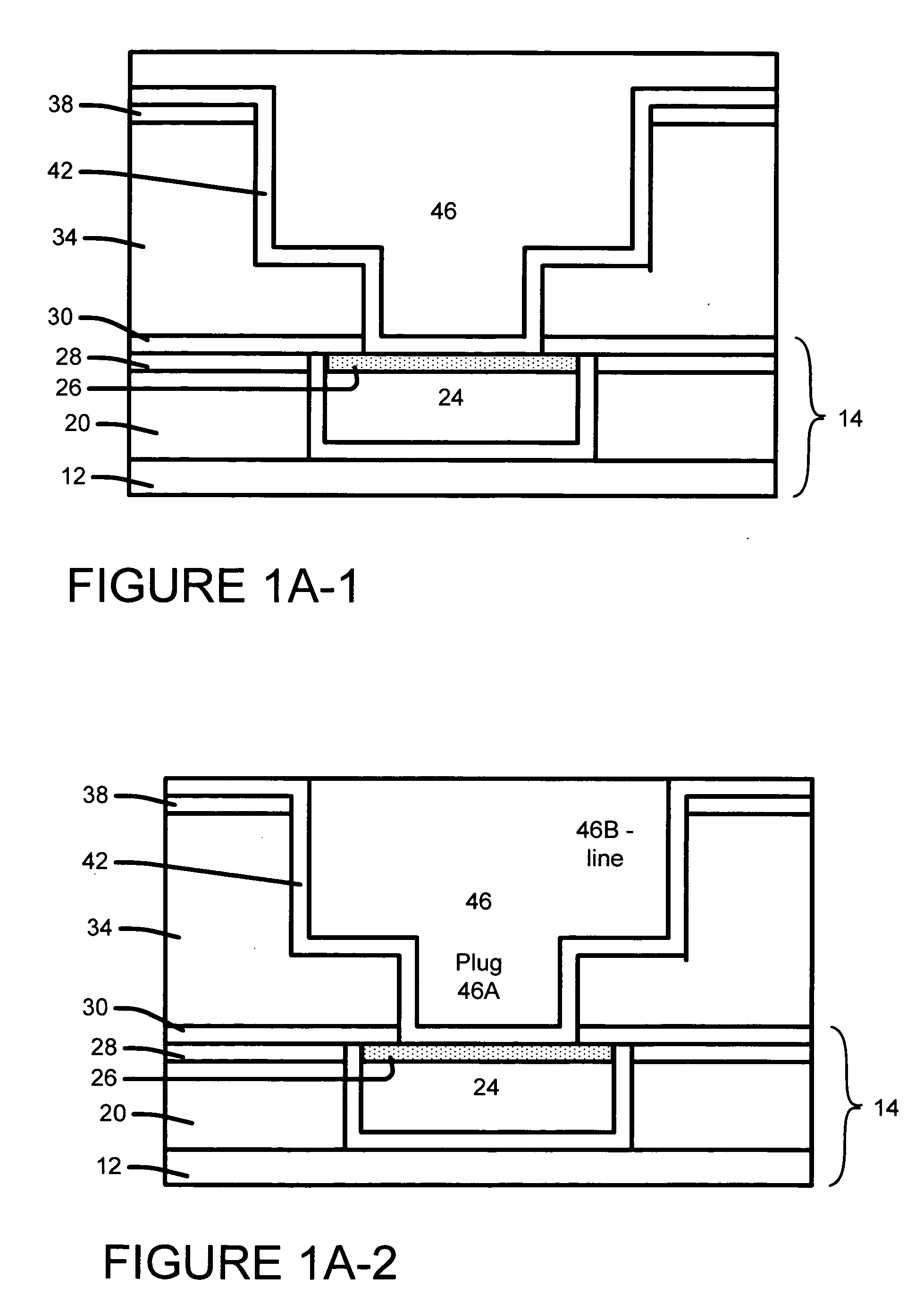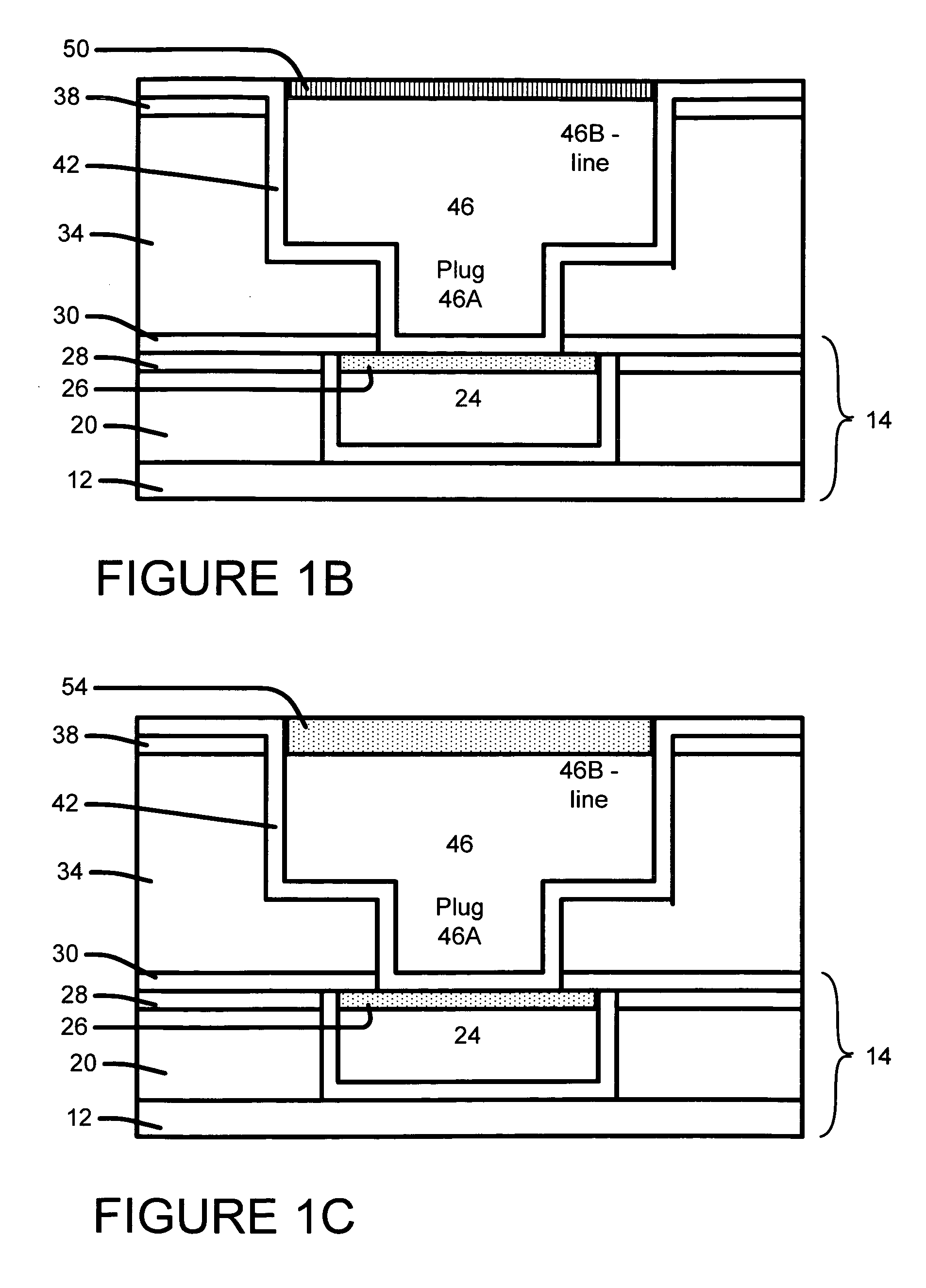Grain boundary blocking for stress migration and electromigration improvement in CU interconnects
a grain boundary blocking and stress migration technology, applied in the field of semiconductor processing, can solve the problems of increasing the requirements for high density and performance associated with ultra large scale integration (ulsi) semiconductor device wiring, reducing manufacturing throughput, and increasing manufacturing costs, so as to reduce repetition
- Summary
- Abstract
- Description
- Claims
- Application Information
AI Technical Summary
Benefits of technology
Problems solved by technology
Method used
Image
Examples
first example embodiment
I. First Example Embodiment
[0041]FIGS. 1A-1, 1A-2, and 1B to 1E show a first example embodiment for a method of forming an interconnect. In the first embodiment, the barrier layer is not removed by chemical-mechanical polish (CMP) before the implantation of the alloying element. The barrier layer acts as an implant block to prevent the alloying elements from being implanted into the dielectric layer.
[0042] Referring to FIG. 1A-1, we provide a semiconductor structure 14 having an exposed lower interconnect 24 and an inter metal dielectric layer 20. The term “structure surface” is meant to include the upper most exposed layers over a semiconductor wafer, such as a silicon surface, an insulating layer and / or conductive lines.
[0043] The lower interconnect 24 is preferably comprised of copper. The lower interconnect preferably has a top doped region 26. The top doped region is preferably formed by an embodiment of the invention. The lower interconnect is shown for an example and the st...
second example embodiment
II. Second Example Embodiment
[0082]FIGS. 2A-1 to 2D show a second example embodiment for a structure and a method of forming an interconnect. In the second embodiment, the barrier layer is removed by chemical-mechanical polish (CMP) before the implantation of the alloying element. A hard mask layer that underlies the barrier layer acts as an implant block to prevent the alloying elements from being implanted into the dielectric layer. Parameters for the second embodiment are similar to the first embodiment unless otherwise specified.
[0083] Referring to FIG. 2A-1, we provide a semiconductor structure 214 having an exposed lower interconnect 224 and an inter metal dielectric layer 220.
[0084] The lower interconnect 224 can be comprised of copper. The lower interconnect preferably has a top doped region 226.
[0085] The top doped region 226 is doped with alloying element such as B, P, N, Si, or C with preferably concentration less than 1%. The top doped region 226 having at least some ...
PUM
 Login to View More
Login to View More Abstract
Description
Claims
Application Information
 Login to View More
Login to View More - R&D
- Intellectual Property
- Life Sciences
- Materials
- Tech Scout
- Unparalleled Data Quality
- Higher Quality Content
- 60% Fewer Hallucinations
Browse by: Latest US Patents, China's latest patents, Technical Efficacy Thesaurus, Application Domain, Technology Topic, Popular Technical Reports.
© 2025 PatSnap. All rights reserved.Legal|Privacy policy|Modern Slavery Act Transparency Statement|Sitemap|About US| Contact US: help@patsnap.com



